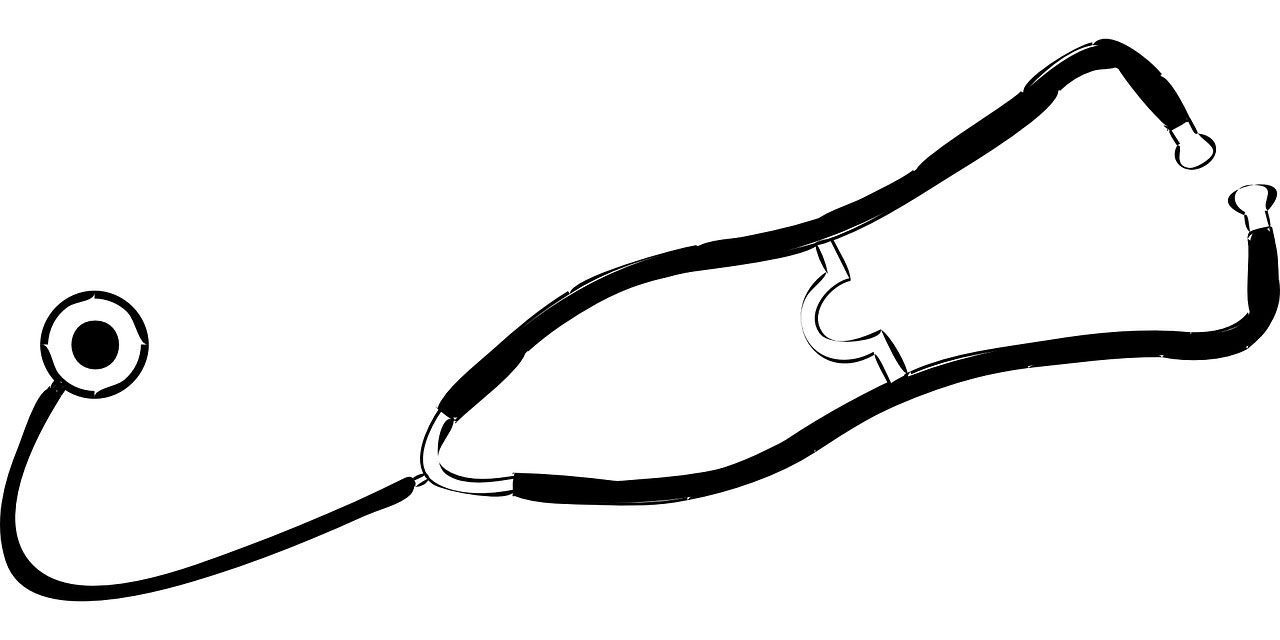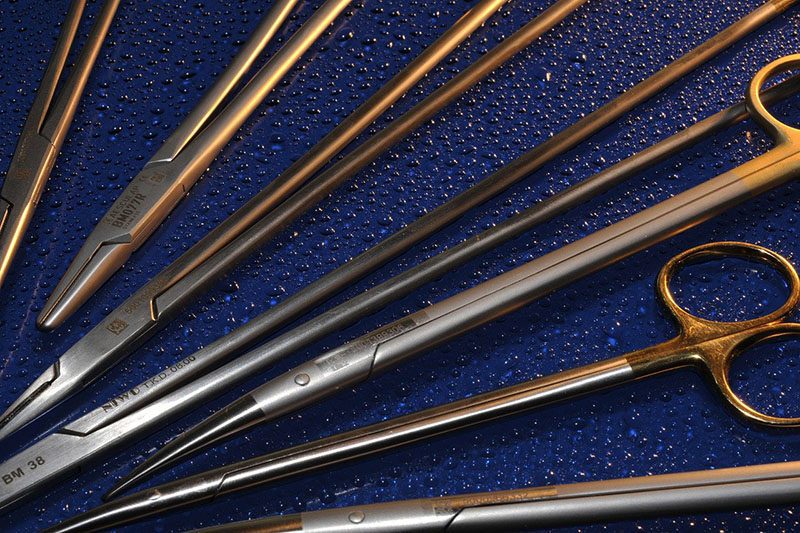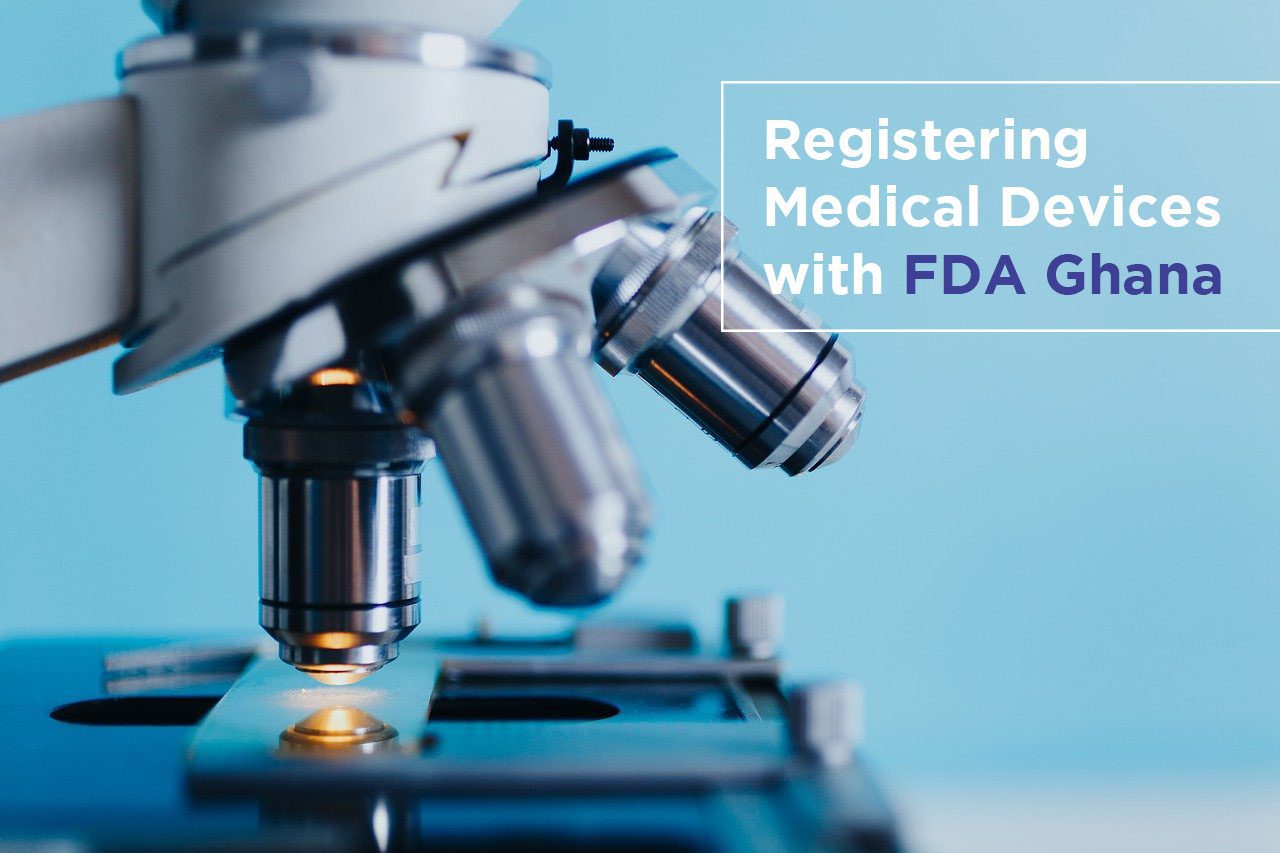It is required to have a valid license before you manufacture or import any medical device in Ghana and registering medical devices with the relevant authorities is key. The Food and Drugs Authority (FDA) is the regulatory body that ensures all medical devices are safe for use. Additionally, they ensure locally produced or imported medical devices meet the required quality and standards.
In this article, we will discuss the requirements and processes involved in registering medical devices.
What is a Medical Device?
A Medical Device is any device used for medical purposes.
Additionally, let us consider the definition and description given by World Health Organisation (WHO).
According to WHO, a “Medical device’ means any instrument, apparatus, implement, machine, appliance, implant, reagent for in vitro use, software, material or other similar or related article, intended by the manufacturer to be used, alone or in combination, for human beings, for one or more of the specific medical purpose(s) for:
- diagnosis, prevention, monitoring, treatment or alleviation of disease,
- diagnosis, monitoring, treatment, alleviation of or compensation for an injury,
- investigation, replacement, modification, or support of the anatomy or of a physiological process,
- supporting or sustaining life,
- control of conception,
- disinfection of medical devices
- providing information by means of in vitro examination of specimens derived from the human body”;
Therefore, you cannot classify or consider any device as a medical device unless it meets the above description and conforms to standards.

Which Agency is responsible for the registration of medical devices in Ghana?
Before a Medical Device can be imported for sale or manufactured locally, it must go through testing, trial and checks to ensure safety and conformity with standards. The Food and Drugs Authority (FDA) is the Agency under the Ministry of Health that regulates medical devices. The FDA as part of its mandate provides and enforces standards for medical devices and household chemical substances.
What are the requirements for registering Medical Devices?
a. Cover letter
b. Applicant’s details
- Can be a manufacturer
- Or an importer
- and a non- resident applicant is required to appoint a local agent with the requisite mandate to represent the applicant)
c. Local Agent’s details
- a local agent should be a corporate body registered in Ghana.
- Should have a mandate from the applicant
- Responsible to monitor the device on the market and inform the Authority on any relevant issues relating to a registered device
- Facilitate communication between applicant and the Authority.
- Handle device recalls
- Provide technical support and services to users or registered device(s).
d. Classification of applications
During the registration process, the applicant has to specify if the application is new, renewal or variation of medical device.
New applications for registering medical devices
- a separate application is required for each single medical device or medical device group or medical device family or medical device system.
- One original hard-copy and one electronic copy in a text selectable Portable Document format (PDF) on a CD-Rom shall be submitted.
- Samples of the product as per FDA sample schedule
- Non-refundable application fee
Applications for renewal of registration of medical devices
Renewal of registration shall be made at least three months before the expiry of registration. The following shall be submitted:
- Dully completed renewal forms
- Samples of products
- Non-refundable application fee
Application for variation of a registered medical device
Any application for variation to a registered product shall indicate any significant change(s) that could reasonably be expected to affect the safety, quality or good performance of a registered product. This may include;
- The manufacturing process, facility or equipment
- The manufacturing quality control procedures, including methods, tests or procedures used to control the quality, purity, safety and sterility of the device or of the material used in its manufacture.
- The design of the device, including its performance characteristics, principles of operation and specifications of materials, energy source, software or accessories
- The intended use of the device, including any new or extended use, any addition or deletion of a contraindication for the device, and any change to the period used to establish its expiry date.
- The requisite variation fees
e. Language
- The language for all applications and supporting documents shall be in English and legible. Documentation in any other language will not be accepted.
- Where a material is not originally in English, a copy in the original language and a full translation into English should be submitted. The authentication of the translation has to be done at the nearest Ghana Embassy or by the National Drug Regulatory Authority of the country from where the document originates.
f. Data presentation
- All printed materials including any information, data, tables, diagrams, and attachments must be legible of font size 12 or more and shall be presented on A4 and 80g/m² paper. All pages shall be numbered and should have a Table of Contents.
- Where applicable, acronyms and abbreviations should be defined the first time they are used in each part.
- Dossiers should be securely bound and arranged subsequentially and could be submitted separately bound volumes for the different parts but shall be numbered serially for ease of reference. The dossier covers shall be made of a material which is thick and hard enough not to collapse in standing position.
- Before submitting the completed forms, check to ensure that all information requested for have been provided in full.
What are the requirements for registering imported Medical Devices?
a. Applicant must have a company duly registered with the Registrar General’s Department. See How to register a company with Registrar General here.
b. The product intended to be import should at least have 60% of the shelf-life remaining on arrival at the port. But products with less than 24 months shelf-life should at least have 80% of its shelf-life remaining on arrival at the port of entry.
c. Also, only registered products shall be permitted to be imported
- Importation permit shall be granted before the importation of the products, unless otherwise provided.
- Permit issued for importation of products shall be presented to Customs, Excise and Preventive Service (CEPS) only once, and shall not be presented for the second time in case goods are short-landed.
- Where goods are short-landed, a new import permit shall be obtained from the Authority.
- Permit shall be valid for one year from the date of issue.
- A fee (determined by the Authority) shall be charged for the processing of a permit submitted for importation.
- Vetting of an application for importation and accompanying pro-forma invoices may take up to 24 hours or one working day.
Information required for completing the Import Permit Application Form
a. The form shall require the following:
- Name, postal and residential addresses of both the importer and exporter.
- Name and description of products
- Total quantity of products, in dosage units
- Products registration number
- Name of manufacturer and country of origin
- Batch number
- Total CIF Value
- Name of port of shipments and approved port of entry.
- Date, company stamp and signature.
b. It also requires the brand name and generic name of the product.
c. For non-pharmaceutical companies and products, the permit shall be signed by a duly authorized person(s)
d. Products imported shall be inspected by officials of the Authority at the port of entry before they are released to the importer.
e. The above notwithstanding any statute governing importation procedures and tax liabilities shall apply to an imported product.
f. An application for importation of a product may be rejected for several reasons. This may include, but not limited to:
- A product not registered with the Authority
- A product with a potential for abuse
- A product found to be fake, substandard and/or adulterated
g. All importers are required to renew their company license with the Authority Annually.
Are there specific requirements for registering some imported products?
Yes, products such as “Condoms” have specific requirements to be met.
- Imported condoms shall be released from the port of entry based on the results of a batch-to-batch analysis.
What are the labeling requirements for registering medical devices?
The label should have all information in English and expressed in a manner that is legible, permanent, and in prominent manner which can easily be understood by the intended user.
- The labeling information shall include:
- The name of the device, both ‘proprietary’ and ‘common’
- The name and address of the manufacturer
- The manufacturing site address
- The identifier of the device, including the identifier of a device that is part of a system, test kit, medical device group, medical device family or medical device group family.
- In the case of a Class III or IV device, the control number, otherwise the batch or lot number.
- An indication of what the package contains, expressed in terms appropriate to the device such as size, net weight, length, volume or number of units.
- The word “Sterile” if the manufacturer intends to sell the device in a sterile condition.
- The words “for single use only” if the device is intended for that purpose.
- The expiry date of the device expressed in day, month and year.
- The medical conditions, purpose and uses for the which the device is manufactured, sold or represented, including the performance specification of the device if those specifications are necessary for the proper use unless self-evident to the intended user.
- The directions for use, unless directions are not required for the safe and effective use of the device.
- Warnings, precautions and limitations of product
- Any special storage conditions applicable to the device
- The labeling design shall not bear close resemblance to other products already registered by the Authority.
- (a) In addition to the above requirements, where the device is for sale to the general public, the labeling information shall be set out on the outside of the package that contains the device, and must be visible under normal conditions of sale.
(b) where the package that contains a device is too small to display all the information as specified in (1) above, the directions for use shall accompany the device but need not be set out on the outside of the package or be visible under normal conditions of sale.
- Any special information, required by a relevant and applicable standard must be provided
What are the classifications of medical devices?
| Class | Risk Level |
| I | Low |
| II | Low-Moderate |
| III | Moderate-High |
| IV | High |

What are the applicable fees for the registration and re-registration of medical devices?
Be informed that the FDA has a classification of the medical devices and depending on where your product falls, then the appropriate fee will apply.
- Local Medical Devices = GH250.00 (per annum)
- Class I Medical Devices = US$ 60.00 or its Cedi equivalent (per annum)
- Class II Medical Devices = US$ 100.00 or its Cedi equivalent (per annum)
- Class III Medical Devices= US$ 160.00 or its Cedi equivalent (per annum)
- Class IV Medical Devices= US$ 160.00 or its Cedi equivalent (per annum)
What are the Timelines for the registration of medical devices?
- Both new and renewal applications are processed within a minimum period of six months.
- It may go beyond six months if the application was queried and queries not adequately addressed on time.
- However, if the application is for expedited reviews, then it might be shorter than six months.
What are the penalties or sanctions for non-compliant for imported products?
- Order the re-export of the product at the cost of the importer.
- Confiscate the product which may be destroyed and the cost of destruction borne by the importer, who may be prosecuted accordingly.
What the authority may do to bring the applicant to compliance?
- The Authority may permit an importer to bring an imported non-compliant product into compliance with the law. Any sorting, processing, labeling/relabeling or analysis shall be supervised by an officer of the authority at the expense of the importer.
- Where the non-compliant product is unregistered, the importer shall be made to submit the product for registration and pay the appropriate fees in addition to a penalty to be determined by the Authority.
CONCLUSION
Registering a medical device would not be complicated or take a longer period if the applicant studies the various guidelines, requirements and processes above and apply them during the application. In order words, when a medical device meets the quality and standards, is safe for use, and the correct application documents are provided, the Authority will approve the registration after satisfying themselves with the provided information.


